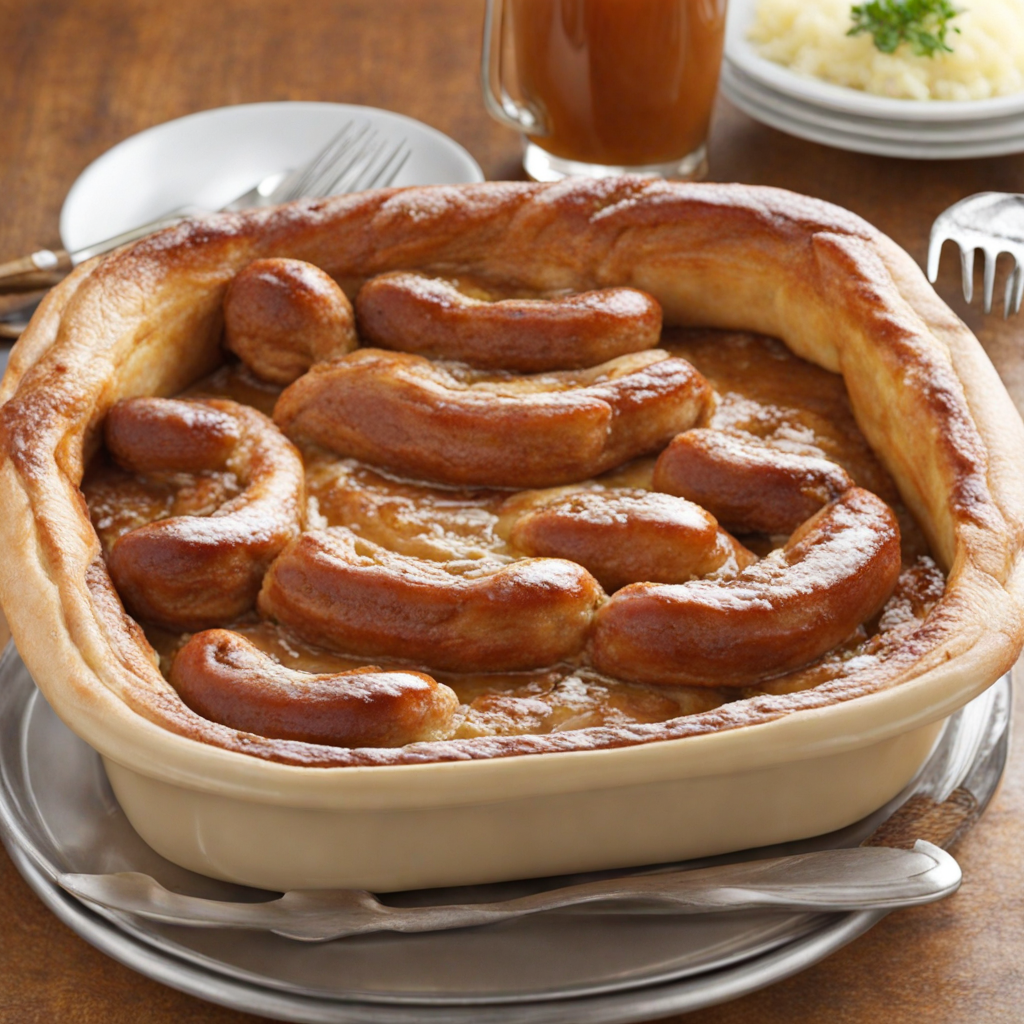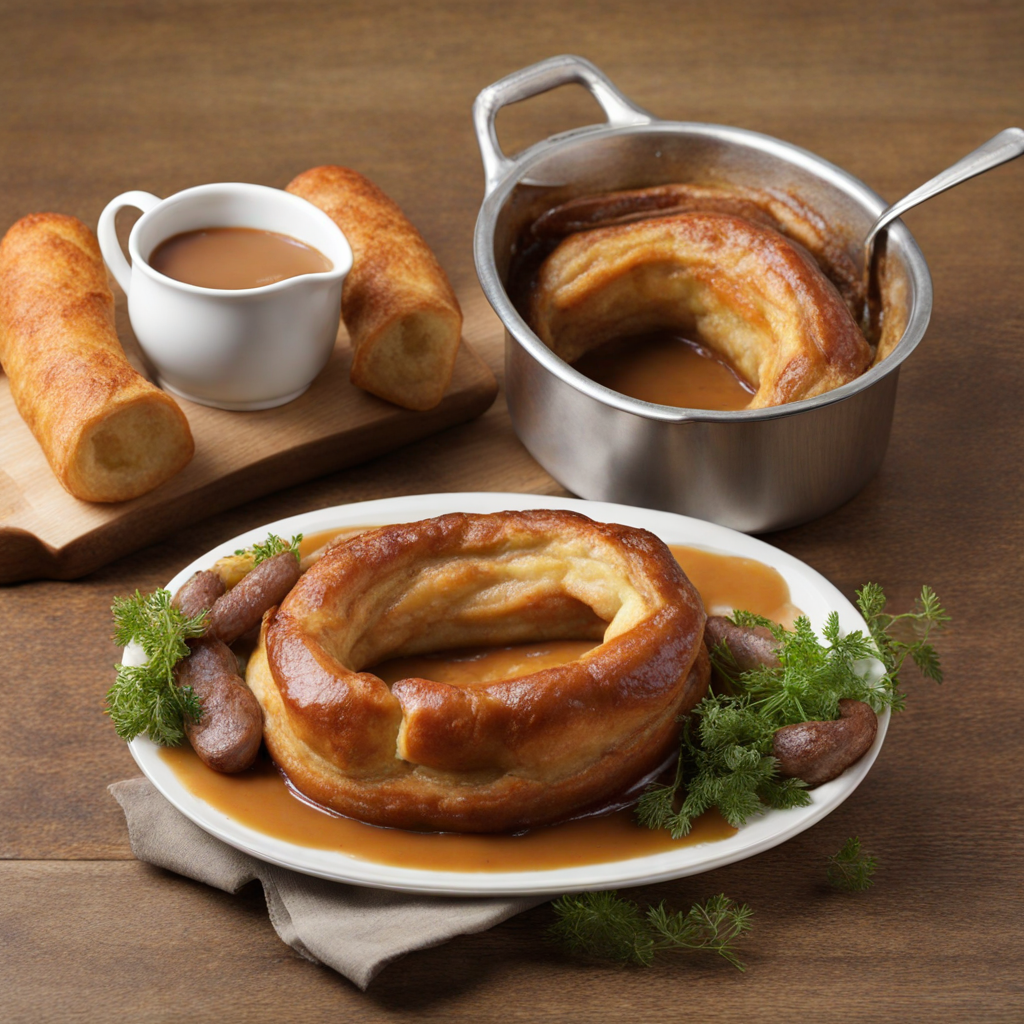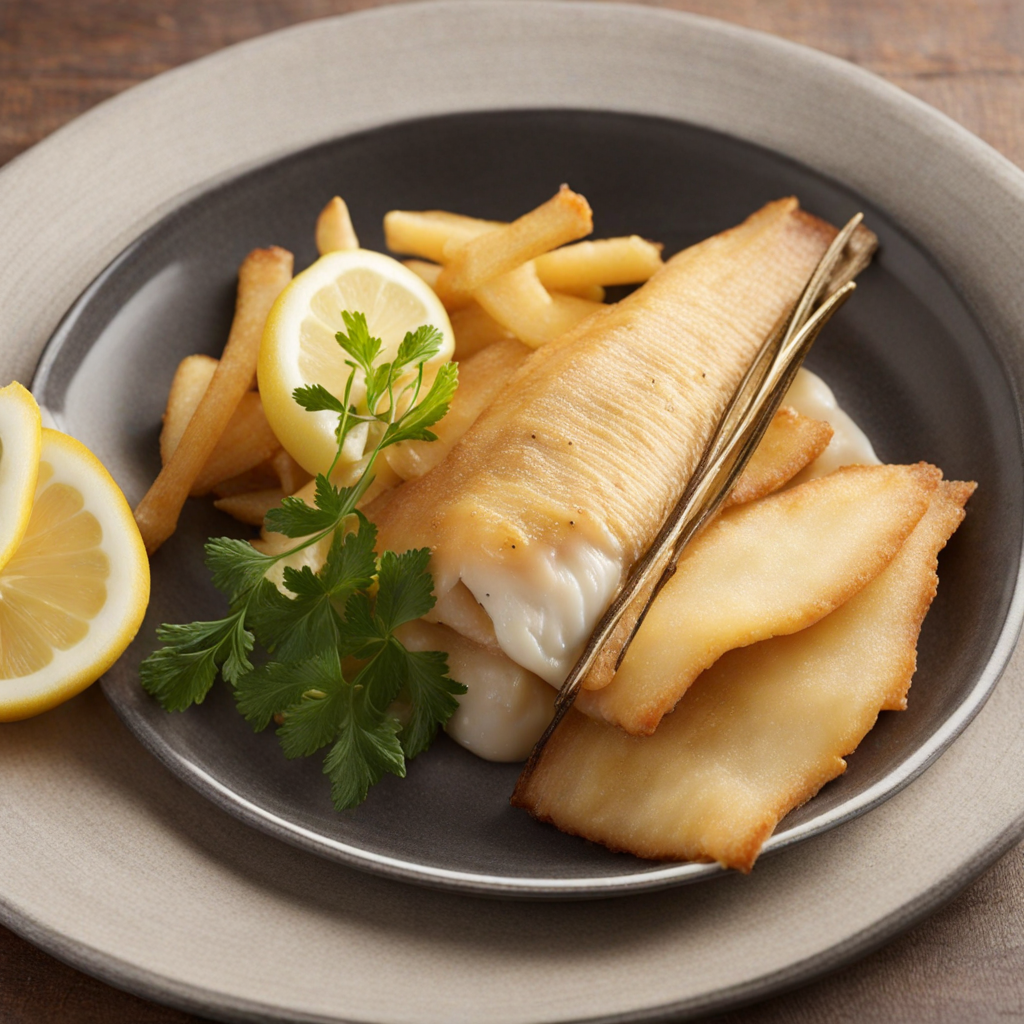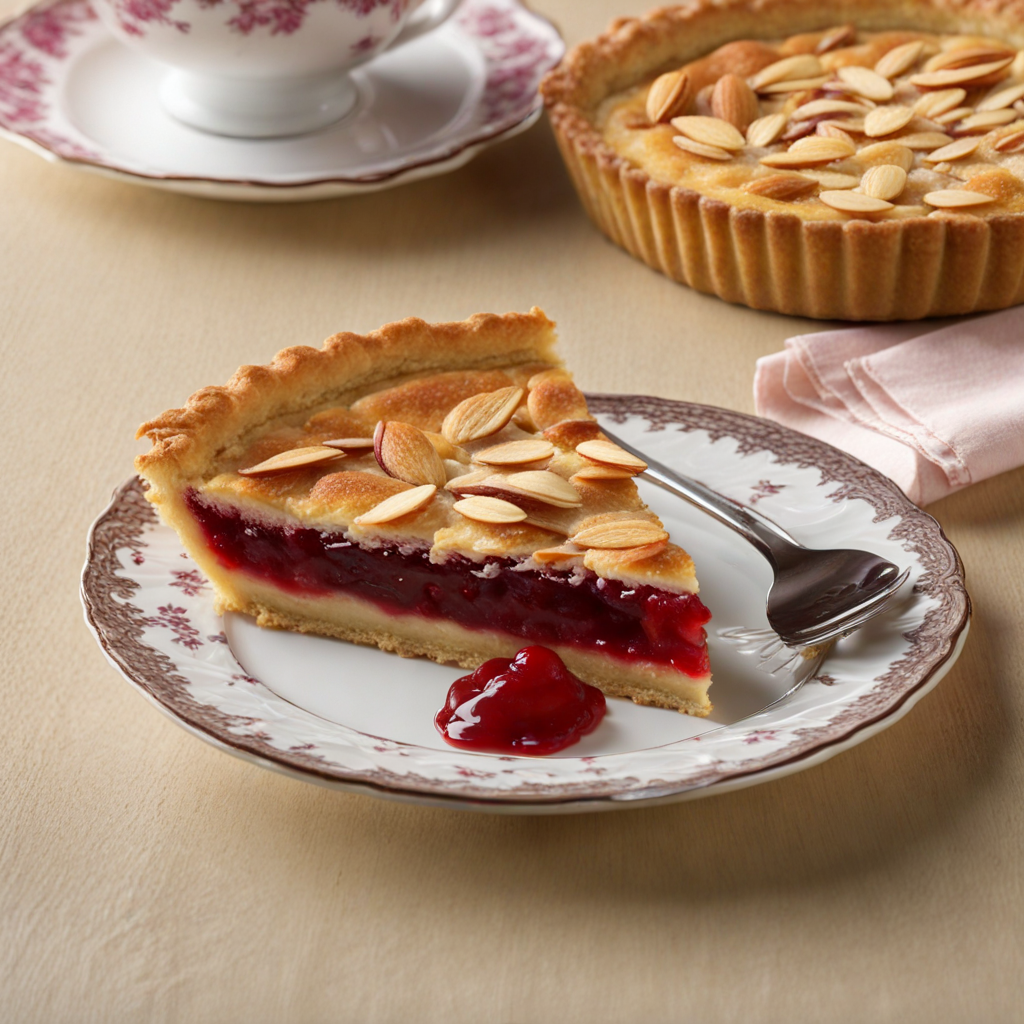Toad in the Hole
Toad in the Hole is a classic British dish that combines the comforting elements of sausages and Yorkshire pudding. At its core, the dish features succulent sausages nestled in a light, fluffy batter made from eggs, flour, and milk. The batter is poured into a hot baking dish, where the sausages are partially cooked before being submerged in the batter and returned to the oven. As it cooks, the batter puffs up and envelops the sausages, creating a delightful contrast of textures—crispy on the outside and soft on the inside. This dish is traditionally served with rich onion gravy, which adds depth and warmth to the flavors. The savory sausages, often infused with herbs and spices, complement the slightly sweet and airy Yorkshire pudding beautifully. The gravy acts as a luscious sauce that brings the components together, making each bite a satisfying experience. Vegetables such as peas or carrots are commonly served on the side, adding freshness and color to the plate. Toad in the Hole is not just a meal; it's a comforting dish that evokes a sense of nostalgia and home-cooked warmth, often enjoyed during Sunday dinners or family gatherings. The simplicity of the ingredients belies the complexity of flavors, making it a perfect choice for those looking to explore traditional British cuisine. Whether you’re a seasoned foodie or someone curious about British dishes, Toad in the Hole offers a unique taste experience that is both hearty and satisfying.
How It Became This Dish
Toad in the Hole: A Culinary Journey Through Time and Tradition Toad in the Hole is a quintessentially British dish that has captured the hearts and stomachs of many since its origins. A hearty meal, it consists of sausages baked in Yorkshire pudding batter, creating a comforting, savory dish that evokes a sense of warmth and nostalgia. While the name may conjure whimsical imagery, its history is rich and deeply entwined with the cultural tapestry of the United Kingdom. Origins and Etymology The origins of Toad in the Hole can be traced back to the 18th century, although the precise timeline remains a bit murky. The earliest known reference to the dish appears in a 1747 cookbook by Hannah Glasse, titled “The Art of Cookery Made Plain and Easy.” The term “Toad in the Hole” itself is believed to have emerged in the 19th century, although there are competing theories regarding its etymology. One suggestion is that it alludes to the sausages resembling toads peeking out of a hole, while another posits that it may derive from the old slang term for sausage, with “toad” simply being a playful term for the meat. The Yorkshire pudding batter used in the dish has its own storied past. Yorkshire pudding, the base of Toad in the Hole, was traditionally served as a first course to fill diners before the main meal. This practice was rooted in the economic necessity of making the most of available ingredients. Thus, the pudding saved money and was a practical solution for families during an era when food scarcity was a reality. Cultural Significance Toad in the Hole has become more than just a meal; it is a symbol of British comfort food. Its significance is amplified by its connection to regional identity, particularly in Yorkshire, where the batter pudding has become a staple in local cuisine. The dish embodies the spirit of the British working class, serving as a reminder of the hearty, no-nonsense meals that sustained families through difficult times. By the 19th century, Toad in the Hole was firmly established as a beloved British dish. It gained popularity amidst the rise of the Industrial Revolution, which transformed the social landscape of the UK. As urbanization drew people into cities, traditional home-cooked meals like Toad in the Hole became a way to maintain cultural ties to rural life. The dish was often served in pubs and inexpensive eateries, making it accessible to the working class and further cementing its status as a cultural icon. Development Over Time As the 20th century unfolded, Toad in the Hole evolved alongside changing societal norms and culinary trends. During the post-World War II era, Britain experienced a culinary renaissance, leading to a renewed appreciation for traditional dishes. The dish became a staple of Sunday roasts, a cherished tradition in British households, where families would gather around the table for a hearty meal after church services. The combination of sausages and Yorkshire pudding created a satisfying meal that was easy to prepare yet felt special, making it ideal for family gatherings. The 1960s and 1970s saw a shift in culinary trends, with the introduction of international cuisines and the rise of nouvelle cuisine. While many traditional British dishes faced the threat of being overshadowed, Toad in the Hole managed to retain its appeal. Chefs began to experiment with the dish, introducing gourmet variations that featured artisan sausages and innovative seasonings, thereby elevating Toad in the Hole to new heights. In recent decades, as the farm-to-table movement gained momentum, there has been a resurgence of interest in traditional, locally-sourced ingredients. This has led to a renewed appreciation for Toad in the Hole, with many chefs embracing the dish’s rustic charm while sourcing high-quality, organic sausages from local farms. Additionally, vegetarian and vegan adaptations have emerged, allowing a broader audience to enjoy this delightful dish without compromising dietary preferences. Modern Interpretations Today, Toad in the Hole remains a staple in British cuisine, often served with onion gravy and seasonal vegetables. The dish’s versatility has allowed it to adapt to contemporary tastes. For example, gourmet versions might feature unique sausage flavors—such as apple and sage or spicy chorizo—while still honoring the traditional Yorkshire pudding base. The dish has also found its way into popular culture, appearing in numerous cookbooks, television shows, and culinary competitions, further solidifying its status as a beloved national treasure. In recent years, the rise of social media has also contributed to the dish's popularity, with food enthusiasts sharing their own takes on Toad in the Hole, complete with enticing photographs and innovative twists. This digital renaissance has breathed new life into the dish, ensuring that it remains relevant in a rapidly changing culinary landscape. Conclusion Toad in the Hole is more than just a dish; it is a narrative woven into the fabric of British history. From its humble beginnings in the 18th century to its ascension as a beloved national comfort food, the dish embodies the resilience and creativity of British cuisine. As it continues to evolve and adapt to modern tastes while retaining its traditional roots, Toad in the Hole stands as a testament to the enduring power of food to connect generations, celebrate culture, and nourish the soul. Whether enjoyed in a cozy pub or prepared at home, it invites us to gather, share stories, and savor the simple, yet profound, pleasures of a meal that has transcended time.
You may like
Discover local flavors from United Kingdom







